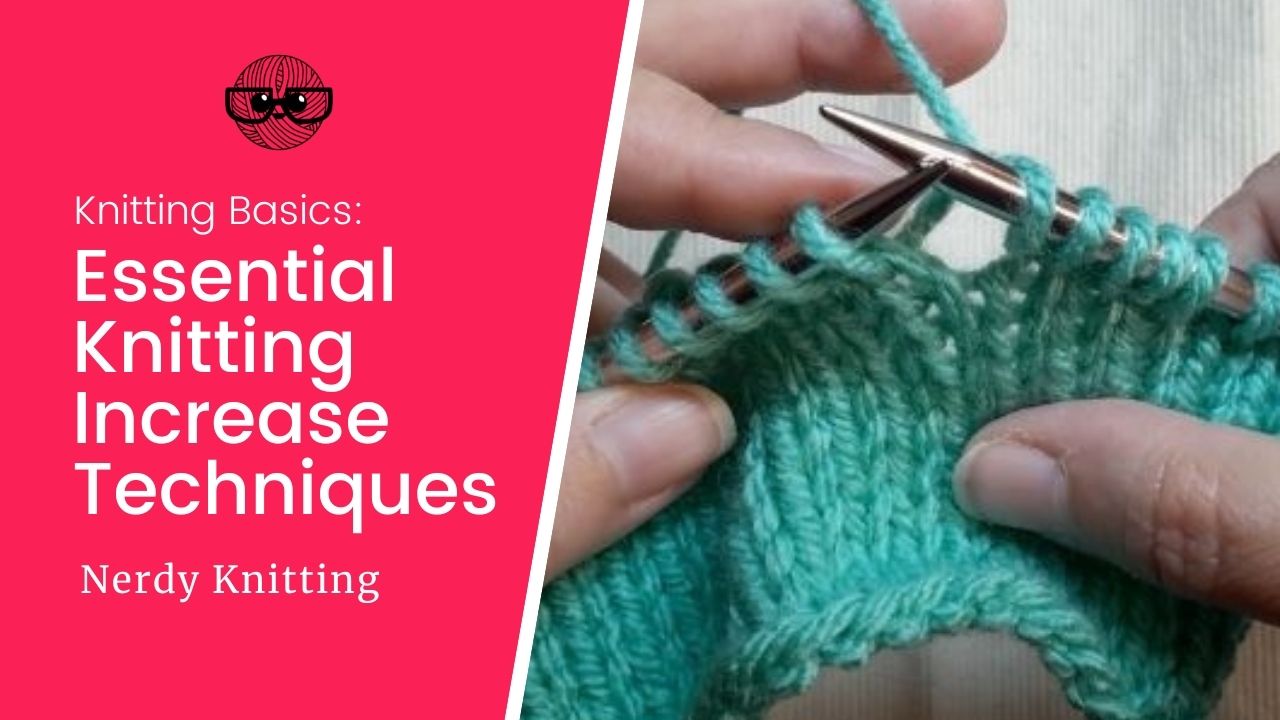Knitting Increase Methods - Bar increase, yarnover, make 1 increases (m1r & m1l)00:62 bar increase03:13 yarnover08. It's often considered the most basic increase in knitting (along with m1r below and yo above). Knit in the front and back (kfb) as mentioned earlier, this is the default increase. This forms a neat, invisible increase, so is often used in the middle of a row or where a series of increases are to be worked. However, increasing this way leaves a visible bump in your knitting, so it is not ideal for all projects. Increase 2 stitches in 1 and increase by casting on stitches towards the sides. [1] for example, you might use this method of increasing when you are using a textured stitch, such as the garter stitch. Download this free ebook to get all of these methods for increasing knitting: There is more than just m1l & m1r. Web an increase is simply adding a stitch to the knitting.
How to Increase or Decrease Knitting Stitches Learn to Knit for
Web there are three main methods of increasing stitches, all of which are quite simple to do. Web a massive list of all the knitting.
How to Increase in Knitting (Essential Increases for Every Knitter
Each way is likely to have been named and used by someone. Web this video demonstrates how to knit four different types of increases: Web.
How to do the KLL knitting increase (knit through left loop)
Web there are three main methods of increasing stitches, all of which are quite simple to do. Web in this article, we’ll take a look.
How To Increase In Knitting Made Easy for Beginners TREASURIE
Those that create stitches in the strand between the needles and those that create stitches in existing stitches. Instructions and tutorial video to teach these.
Knitting increases The ultimate list every knitter should know
With these increases, you will learn to knit raglan sleeves, tops with inclined edges, wool shawls or triangular knit scarves… and many other things! Web.
How To Increase In Knitting Made Easy for Beginners TREASURIE
Web make 1 left (m1l) lean: Knitting front and back is an easy way to increase. If you don’t look closely, it will not be.
Learn two ways to increase a stitch with this stepbystep knitting
It's often considered the most basic increase in knitting (along with m1r below and yo above). Knit 1 front and back, purl 1 front and.
How to M1L and M1R Knitting increases without the confusion [+video]
Web this video demonstrates how to knit four different types of increases: Increase 2 stitches in 1 and increase by casting on stitches towards the.
How to knit right leaning and left leaning increases? For every
It does not distort and it’s a perfectly fine increase except for the bar. It’s sometimes called a bar increase as it leaves a noticeable.
Sometimes Simply Called A M1 (Make 1), This Increase Is So Easy To Work.
If you don’t look closely, it will not be noticed. It blends into the knitted fabric nicely, without any bumps, and lays flat. [1] for example, you might use this method of increasing when you are using a textured stitch, such as the garter stitch. There are lots of easy ways to add stitches to your knitting, so let’s get started.
Those That Create Stitches In The Strand Between The Needles And Those That Create Stitches In Existing Stitches.
With these increases, you will learn to knit raglan sleeves, tops with inclined edges, wool shawls or triangular knit scarves… and many other things! There is also a video for each increase that will demonstrate the increase and more tips to help you understand how they work. Knitting front and back is an easy way to increase. Usually, you can substituted one type for the other, but the stitch counts will need to be adjusted accordingly.
Knit In The Front And Back (Kfb) As Mentioned Earlier, This Is The Default Increase.
Make one left (m1l) and make one right (m1r) methods add stitches by twisting the “bar” of yarn between two stitches. Consider all of the ways you could create a new loop of yarn on the needle. Web you can do a lot of things in knitting without shaping, but there will come a time when you’ll need to know how to work a knitting increase. Knit 1 front and back, purl 1 front and back;
If I Could Use Only Three Methods (And I Pretty Much Do Only Use These Three), They Would Be M1L, M1R, And Yarn Over (Yo).
The corresponding increase for the wrong side would be m1pl and m1pr. Instructions and tutorial video to teach these increases for beginner knitters: The stitches slant either left or right depending upon which one is. It does not distort and it’s a perfectly fine increase except for the bar.







![How to M1L and M1R Knitting increases without the confusion [+video]](https://nimble-needles.com/wp-content/uploads/2020/04/make-one-right-2-1024x684.jpg)

